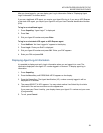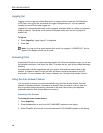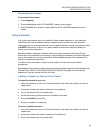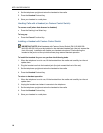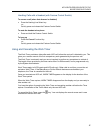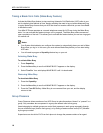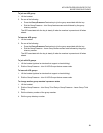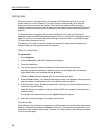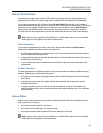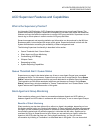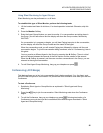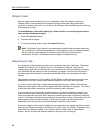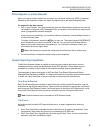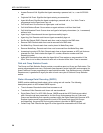
ACD AGENT/SUPERVISOR GUIDE FOR THE
MIVOICE 5224/5324 IP PHONES
Queue Threshold Alert
Thresholds are programmed into the ACD system to provide a basis for alerting Agents and
Supervisors that calls have waited longer than acceptable limits (thresholds) to be answered.
If your set is programmed with a Generic Group Queue Status Feature Key, it can provide a
visual indication of the current workload conditions of the Automatic Call Distribution (ACD) Group
into which you are logged. Supervisors may have two or more Specific Group Queue Status
Feature Keys and threshold alerts, allowing them to monitor activity in more than one Group.
Your set may also be programmed to provide an audible alert that Queue Status has changed.
Note: Agents in the Logged Out, Do Not Disturb, or Make Busy states are not considered
active Agents for the purpose of Queue Threshold Alert.
Visual Indications
If your set is programmed to provide a visual alert, the indicator beside the Queue Status
Feature Key indicates the three levels of alert as follows:
a solid indicator beside the Line Select Key on your set indicates that the workload is below
the first threshold limit programmed
a slowly flashing indicator indicates that the workload is above the first but below the second
threshold limit programmed
a quickly flashing indicator indicates that the workload is above the second threshold limit
programmed.
Audible Indications
For sets programmed for audible indications, the system provides the following different ringing
patterns, depending on the threshold alert status:
a single ring occurs when the longest waiting caller exceeds the programmed first threshold
time interval
a double ring occurs when the longest waiting caller exceeds the programmed second
threshold time interval
a single or double ring occurs when a previous threshold time interval is reverted to (i.e.,
when the longest waiting call is answered and the next longest waiting caller is in a different
threshold level).
Queue Status
Agents may access the following queue-status information about their Group (Supervisors may
query more than one Group):
the number of active Agents in the Group
the number of calls waiting for the Group (queue)
the length of time that the longest call has been waiting for the Group.
Note: Agents in the Logged Out, Do Not Disturb, or Make Busy states are not considered
active Agents for the purpose of Queue Status.
21



